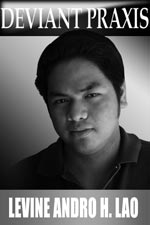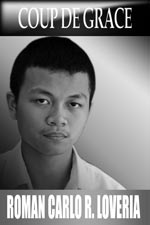Tag: November 20, 2008
Ikabod lives on
 WELL-LOVED cartoonist Severino “Nonoy” Marcelo may be gone, but his humor and artistry live on as shown in a commemorative exhibit.
WELL-LOVED cartoonist Severino “Nonoy” Marcelo may be gone, but his humor and artistry live on as shown in a commemorative exhibit.
“The two most important things that Nonoy gave us were one, humor, and two, art,” curator Virgilio Aviado said during the opening of the exhibit, Muling Ptyk: Da Art of Nonoy Marcelo, which ran from Sept. 16 to Oct. 3 at the UST Museum. It featured original Nonoy Marcelo drawings from the private collection of lawyer Saul Hofileña.
While the collection is not actually for public viewing, Hofileña has agreed to a campus tour, with Vargas Hall at the University of the Philippines as the exhibit’s first venue.
Good times, Good music
RELEVANT and entertaining—two words that describe Katoto, an independently produced song compilation from two UST alumni. Erstwhile Varsitarian editor-in-chief Victor Emmanuel Carmelo “Vim” Nadera and former staff photographer Paul Val Peña are the minds behind Katoto. Peña set Nadera’s poetry to music, a collaboration they have had since their college days at the University. In his music, Peña employs guitars almost all the time, while making use of ethnic-sounding instruments like the cajon and the harmonica.
Christianity thrives in China
IS THE world finally seeing a China more tolerant of the Christian faith?
The head of the state-recognized Chinese Patriotic Catholic Association (CPCA) believes so, citing the growing number of Catholics among his country’s 1.3 billion people.
“This is the best time to (promote) religious freedom in the past 60 years,” Liu Bainan told the Varsitarian during the sidelines of the 7th Asian Conference of Religions for Peace (ACRP) at the Manila Hotel from Oct. 17 to 21.
Sison elected women’s chair of Asian peace body
 UST GRADUATE School dean Dr. Lilian Sison now heads the women’s arm of the Asian Conference of Religions for Peace (ARCP), taking over from India’s Dr. Deepali Bhanot who held the post for ten years.
UST GRADUATE School dean Dr. Lilian Sison now heads the women’s arm of the Asian Conference of Religions for Peace (ARCP), taking over from India’s Dr. Deepali Bhanot who held the post for ten years.
Bhanot turned over the position last Oct. 18, at the end of a three-day international religious meet at the Manila Hotel.
Before the turn-over ceremony, Bhanot reported on the proceedings of two days of meetings attended by participants from Japan, China, the Korean Peninsula, India, Pakistan, the Philippines, and Indonesia, among others.
Rosary-less Rosary month
 OCTOBER, the month of the Holy Rosary, has come and gone but it seems there was no major activity to promote the devotion on campus, very ironic in an institution that calls itself Dominican since the Dominicans are historically the champions and propagators of the devotion: in fact their founder, Santo Domingo de Guzman, was supposed to have received the rosary from the Blessed Mother herself.
OCTOBER, the month of the Holy Rosary, has come and gone but it seems there was no major activity to promote the devotion on campus, very ironic in an institution that calls itself Dominican since the Dominicans are historically the champions and propagators of the devotion: in fact their founder, Santo Domingo de Guzman, was supposed to have received the rosary from the Blessed Mother herself.
There was hardly any recitation of the rosary in October in the Faculty of Arts and Letters, which prays daily throughout the schoolyear the 3’Oclock Prayer, a devotion totally alien to a Dominican campus.
“I was not aware of any kind of celebration took place in the university during October,” said Catherine Belano, a Faculty of Pharmacy sophomore.
There is strength in pain
“But there is suffering in life, and there are defeats. No one can avoid them.”
 LEANING on the cubicle’s partition, I threw up my breakfast and the medicine I have just taken. And outside the wooden door, I could hear my friend asking me if I was fine. But what I sensed more was her intense worry since I went inside that cubicle.
LEANING on the cubicle’s partition, I threw up my breakfast and the medicine I have just taken. And outside the wooden door, I could hear my friend asking me if I was fine. But what I sensed more was her intense worry since I went inside that cubicle.
2008, a milestone year for Philippine philosophy
 THIS YEAR will surely go down in history as a milestone in Filipino thought. If it does not, it will at least be remembered as the year when several educational institutions attempted to build a strong academic tradition in philosophy. The tradition was highlighted by the Philippines hosting the Conférence Mondiale des Institutions Universitaires Catholiques de Philosophie (COMIUCAP), the Third World Congress in Philosophy.
THIS YEAR will surely go down in history as a milestone in Filipino thought. If it does not, it will at least be remembered as the year when several educational institutions attempted to build a strong academic tradition in philosophy. The tradition was highlighted by the Philippines hosting the Conférence Mondiale des Institutions Universitaires Catholiques de Philosophie (COMIUCAP), the Third World Congress in Philosophy.
The conference was hosted by UST and the Ateneo de Manila University and graced by no less than the renowned European contemporary thinker Jean-Luc Marion, former director of philosophy in the premier University of Paris IV.
Other “big” minds of philosophy contributed to making the conference a prestigious and memorable event, notably UST’s own “Venerable Master,” Prof. Alfredo Co, who was the only Asian plenary speaker.
Moving in hyper-reality
 IT IS perhaps a safe assumption that anyone reading these words has never been without the concept of a book: an amalgam of tangible but easily perishable pages bathe in words. But charting its future has really less to do with the material from which it is made than how the book is consumed by its users and how information is being managed.
IT IS perhaps a safe assumption that anyone reading these words has never been without the concept of a book: an amalgam of tangible but easily perishable pages bathe in words. But charting its future has really less to do with the material from which it is made than how the book is consumed by its users and how information is being managed.
Writing, which made the book possible in the first place, was at one time considered a threat to human memory and thinking. As related in Plato’s Phaedrus, the idea of an external device which can take the place of human memory was an appalling prospect to the pharaoh Thamus. Yet eventually, according to novelist and semiotics professor Umberto Eco, in his essay “The Future of the Book,” writing’s natural consequence—the book—had not “narcotized” memory. The ability for remembrance, in the age of the book and the written word, was simply redirected to the memorization of books since they represented the coherent collection of a bulk of thoughts. Another arcane critique of the book was born out of its being filled with ideas: if the book had its own train of thought contained in its own lines, would that not cause a reader’s thinking capacity to atrophy? But as has been proven by many tomes in history, books get more wheels turning in people’s heads. Eco’s riposte consists simply of the idea that books are “machines that provoke further thoughts.”
Dazed and confused – at 500
FIRST the good news: UST is back in the Top 500 of the Times Higher Education Supplement-Quancquarelli Symonds (THES-QS) listing of the world’s universities. The bad news: the survey has become even less credible.
In the survey, Ateneo de Manila University pulled ahead of University of the Philippines to land 254th and become the top university in the country. This is not to disparage Ateneo, but how could an institution that’s barely an expanded liberal arts college and with only a smattering of degree programs tested by state licensure exams become the top Philippine university?
According to the PRC, the best performing universities are UP and UST, 274th and somewhere in the 401-500 bracket in the Times list. In coverage and quality of programs, UP and UST are the top universities in the country. But alas, the Times survey does not really grade quality of programs and graduates. None of its indicators really address these.
SUCs scored for mismanagement
 MANY state universities and colleges (SUCs) are not only in bad shape when it comes to quality as shown by lackluster board exam results – they are also being questioned for their poor handling of public funds.
MANY state universities and colleges (SUCs) are not only in bad shape when it comes to quality as shown by lackluster board exam results – they are also being questioned for their poor handling of public funds.
Practically all are dependent on state subsidies, hamstrung by restrictions on raising funds internally such as hiking tuition, while those that have commercial ventures such as leasing barely make profits because of inefficiencies.
In 2007, the government allocated a total of P18.5 billion for SUCs, and this was increased to P19.4 billion this year.
The University of the Philippines (UP) system, Mindanao State University (MSU), Polytechnic University of the Philippines (PUP), Don Mariano Marcos Memorial State University, and Technological University of the Philippines (TUP) have the largest subsidies from the national budget (see table).







